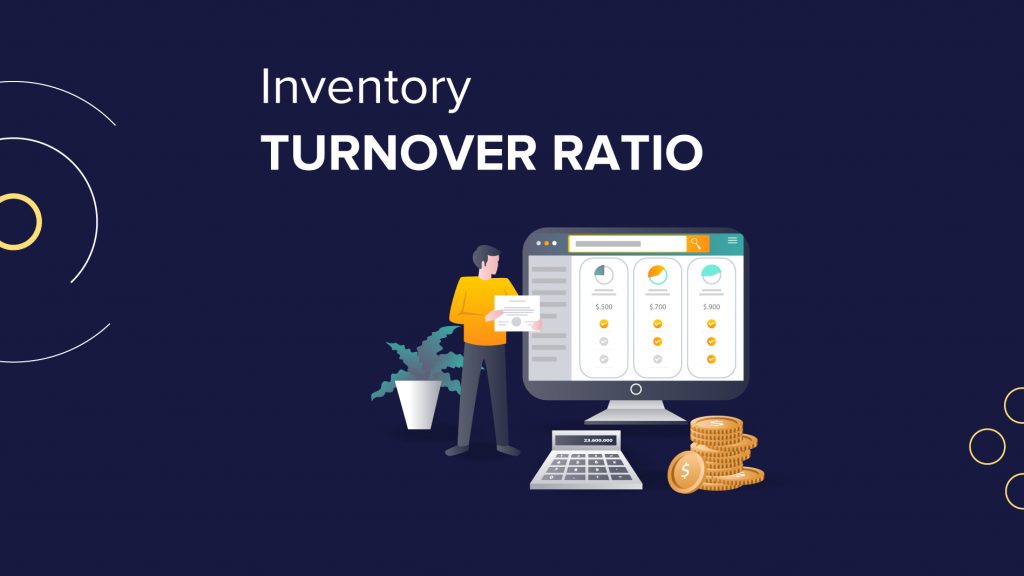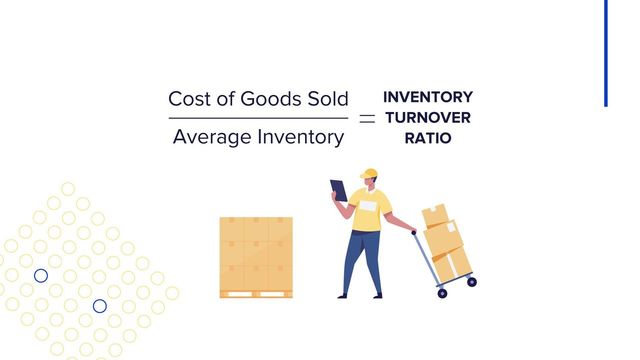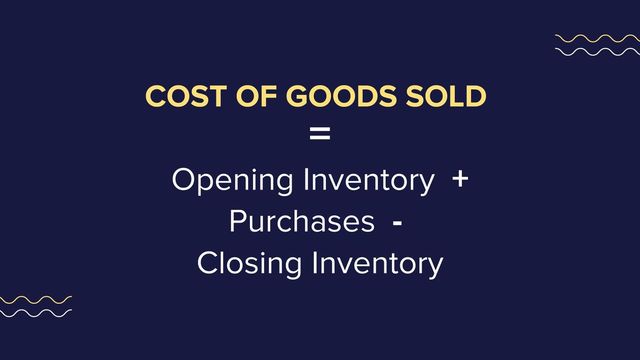One of the primary components of any eCommerce business is inventory management. The key to good inventory processes is strategic management. Thus, every company aiming to succeed in eCommerce should hardly invest in stock management processes.

Careful inventory management includes selling and stocking items and consistently evaluating the offered products. And as sales numbers are one of the critical indicators of product quality, the inventory turnover ratio comes to help.
The inventory turnover ratio is an essential e-commerce element if you want a deep insight into your inventory state. It will help you understand your products’ profitability and hint at some ways for improvement.
Long story short, this article will guide you through the concept of inventory turnover, the inventory turnover formula, and how to improve inventory turnover.
What is Inventory Turnover
Inventory turnover is a ratio that measures how many times a company’s inventory is sold or used in a period. Therefore, it is one of the indicators of how well the company is doing in terms of sales and production.
Usually (but not always), a high inventory turnover ratio is a good sign, as it means the company sells or uses its inventory at a high rate. Similarly, a low inventory turnover ratio might signal that the company is not selling its products as quickly as it would like, which could lead to problems.
Though the above statements work in most cases, there can be some exceptions where a high inventory turnover could spell trouble for the company.
Let’s dig deeper into the inventory turnover ratio formula for a better insight!
Inventory turnover ratio formula | How to calculate inventory turnover?
To calculate the ITR, you need two main components:
COGS (Cost of Goods Sold)
Average Inventory
If you’re not profoundly into financial calculations, and those terms scared you for a moment, here is a quick breakdown of steps you need to know your inventory turnover ratio.
To calculate COGS
COGS includes all the direct costs associated with producing a good or service. This consists of the cost of materials, labor, and other direct expenses and does not include indirect expenses, such as shipping or overhead.
To calculate COGS, start by finding the total cost of your beginning inventory for the period. Then add any purchases made during the period and subtract the cost of ending inventory. This will give you the total cost of goods available for sale.
Here is the COGS formula you should use.
To get deeper into the topic, read our detailed guide on COGS and its formula.
To calculate the average inventory
Add the beginning inventory to the ending inventory, then divide by two. We use the average inventory number for inventory turnover ratio, which allows us to smooth the data fluctuations during demand peaks, seasonality, etc.
To get deeper into the topic, read our detailed guide on average inventory and its formula.
To calculate the Inventory turnover ratio
When you have sales and inventory numbers ready, divide the Cost of Goods Sold by the Average Inventory.

The above formula is one of the most accurate ways of calculating the inventory turnover ratio. You should only ensure that you carefully determine the period for which you estimate the ITR. You can choose your inventory turnover yearly, monthly, and even daily. However, you should calculate COGS and average inventory for the same period to have an accurate result.
So, what does this number hint to you?
High or Low? How to know if your inventory turnover ratio is good for your business?
Sorry, there is no exact answer to this question, as it depends on the industry you are operating in.
A rule of thumb says a high inventory turnover ratio indicates a positive metric, stating that a company has no issues with dead stock. According to the same approach, the low ITR alarms of company’s low selling rate, which might result in a loss of profits.
However, before applying this universal approach to your business, look at your business specifics. If a company sells seasonal products, it may only sell the inventory once or twice a year. Therefore, the turnover ratio for such a company will naturally be lower than for companies that sell products year-round. However, the profit from those seasonal sales might still cover all the production expenses and ensure enough profit for the company.
Below, you can find the accepted average inventory turnover ratios by industry.

How to Improve Inventory Turnover Ratio?
After looking through the essential points of the inventory turnover ratio, we know you are asking, “How to improve inventory turnover?”. Worry not; we’ve monitored every approach to improving inventory turnover ratio and cherrypicked the most working ones for you.
Forecast better
Forecasting is crucial in ensuring that you have enough stock for your customers. It’s not always easy, though – knowing the popularity of your products among your customers is your best friend when determining how much inventory needs to be ordered annually or quarterly.
You can use several methods to forecast sales, including trend analysis, regression analysis, and time series analysis. The most accurate way will depend on the data available and the specific industry.
Check the most popular sales forecasting techniques.
Automate your inventory management
An automated inventory management system can help improve accuracy and efficiency while freeing up time for other tasks. The topmost benefits of automatic inventory tracking are:
- more accurate sales data due to the elimination of human error
- reduced time and financial resources needed for stock tracking
- improved ITR due to real-time stock updates and automatically generated reports
Automate your inventory management with a few clicks now!
While you might think the integration of inventory management is a big hassle, with modern technology, it’s a matter of a few clicks.
Want a quick guide?
- Sign up to eSwap now. Don’t pay for the first two weeks with this link!
- Connect your sales accounts in marketplaces like eBay, Amazon, Etsy, and similar to your inventory management dashboard (check the easiest way to do this).
- Check how your inventory works ANYTIME with a single click on the reporting section.
[banner for starting a free trial]
Replenish inventory when needed
One of the best ways to improve your inventory turnover ratio is to replenish your inventory regularly. This means that you should keep a close eye on your inventory levels and reorder merchandise as soon as your stock starts to run low. By keeping your shelves stocked with fresh inventory, you’ll be able to sell more items and turn over your inventory faster. Additionally, regular replenishment will help you avoid stock-outs, which can negatively impact your sales.
Check our top advice for inventory replenishment.
Encourage sale of old stock
Selling off your old stock will help keep your inventory turnover ratio in good shape. This will help you clear out space for new products and keep your business running smoothly. If you have the old stock you’re struggling to sell, consider holding a clearance sale. This can be a great way to get rid of products and make some extra money. Be sure to price the items appropriately, so you don’t lose out on too much profit.
Another approach for selling your old stock is offering your buyers more beneficial buying terms within loyalty programs. You can give buyers a certain percentage off their next purchase or offer free shipping over a certain amount. This will help to sweeten the deal and increase the chances of selling your old stock.
Whatever route you decide to take, getting rid of your old stock is crucial for maintaining a healthy inventory turnover ratio.
Have a smarter pricing strategy
By carefully evaluating your pricing structure and making strategic adjustments, you can encourage customers to purchase more products more quickly, leading to a higher inventory turnover ratio. You need to be sure that your offered price allows your target audience sufficient purchase motivation while also providing your company with enough profit margin to sustain its operations.
To ensure that your prices are in line with your competitors and market conditions, it’s essential to audit your prices regularly. This will help you identify areas where your prices may be too high or too low and make adjustments accordingly.
Encourage preorder
Building a culture of preordering can help your business in multiple ways. For one, it can help you better manage inventory levels and turnover. By having customers preorder items, you can better understand how much inventory you need on hand at any time. This can help you avoid overstocking or understocking your shelves, both of which can lead to lost sales.
Additionally, preordering can help you better forecast future sales and trends. Businesses can use this information to make more informed decisions about product development, marketing, and other aspects of their business.
Finally, preordering can build customer loyalty and goodwill. Customers who feel like they are part of your inner circle are more likely to return in the future and recommend you to others.
Stock only the inventory that sells well
Only stocking inventory that sells well is a great way to save on storage costs and ensure your business is as profitable as possible. To do this, you’ll need to track which items are selling the best and ensure you always have a good supply of those items in stock. That said, you might consider investing in inventory management software to help you keep track of your stock levels and sales data.
eSwap is your best gateway to hassle-free inventory management. From monitoring live inventory levels to generating insightful reports, eSwap gives you the power to manage your inventory like never before. With the advanced features and integrations, you’ll be able to streamline your operations and make better decisions about stocking your inventory.
Invest in faster shipping
When customers are shopping online, they want to know that their items will arrive as soon as possible. Offering faster shipping options is a great way to win over customers and keep them returning for more. If you can’t offer same-day or next-day shipping, consider offering shipping discounts or free shipping on orders over a certain amount.
Another way to keep customers happy is to offer tracking information for their orders. This way, they can see exactly where their order is and when it’s expected to arrive. Customers will appreciate the transparency, which will help build trust between you and your customers.
Do a heavy marketing
Use email marketing, social media, and other channels to keep your brand in front of customers. Don’t overload your customers, but make sure you’re always at their top of mind. Constant interaction with the brand increases sales and builds customer loyalty – your best friends for improving inventory turnover ratio.
A treasure tip for eCommerce businesses is optimizing your website for mobile. In 2018, over 52% of all website traffic worldwide was generated through mobile devices. You’re missing out on many potential customers if your website isn’t easy to use on a smartphone.
Don’t get stuck with the same product line for too long
People want stability, but not too much of it. As technology is moving forward, your customers want you to provide them with more innovative solutions. Therefore, don’t be afraid to experiment with your product line and offer new and improved versions of your products on a regular basis. This will show that you’re keeping up with the times and that you’re invested in providing your customers with the best possible experience.
To sum up
Every tactic that can help you improve your sales numbers will improve your inventory turnover ratio. While there is no exact answer to how to do that, the above tips are one of the most proven ways to start!








